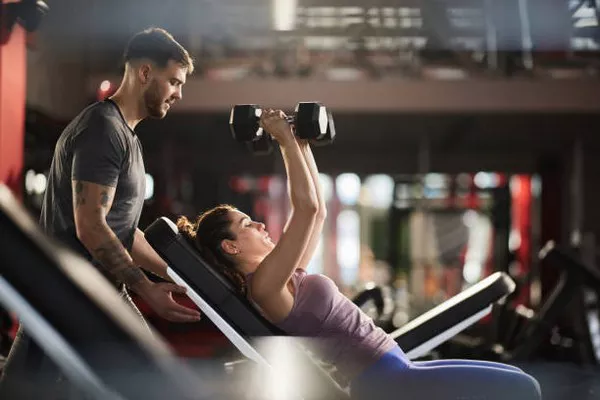Imagine achieving the same workout intensity in half the time—sounds like a dream, right? Welcome to the world of supersets, a fitness technique designed to maximize your exercise efficiency. By strategically pairing exercises, supersets can dramatically cut down your gym or home workout time while enhancing results.
The Basics of Supersets
Supersets involve performing two exercises consecutively with minimal or no rest in between. Fitness coach Rachel Trotta, CPT, describes this technique as a method to streamline workout sessions. “By grouping two different exercises together, you reduce the time spent resting between sets,” Trotta explains.
The benefits extend beyond time efficiency. Personal trainer Brittany Watts, CPT, from Tone House in New York City, emphasizes that supersets boost muscular endurance and increase calorie expenditure. “Supersets help in burning more calories efficiently, making them a go-to for clients with varying fitness goals,” she adds.
Defining Supersets
According to Riley O’Donnell, CPT, an instructor at Fhitting Room in New York City, “A superset involves moving directly from one exercise to another without rest.” This method reduces downtime and keeps your workout momentum flowing. For instance, combining bicep curls with triceps kickbacks targets opposing muscle groups, allowing one to rest while the other works.
Supersets differ from compound sets, which involve pairing two exercises targeting the same muscle group, such as triceps kickbacks followed by overhead triceps extensions.
Who Can Benefit from Supersets?
Supersets are versatile and beneficial for a wide range of fitness enthusiasts. O’Donnell notes that anyone aiming to build strength or endurance can benefit. The technique is particularly advantageous for those accustomed to cardio, as it maintains a brisk pace with minimal rest periods.
For those focused on weight loss, Watts highlights that the continuous movement in supersets maximizes calorie burn. Busy individuals will also find supersets valuable for saving time and maintaining workout efficiency.
Advantages of Supersets
The benefits of incorporating supersets into your routine are well-documented. O’Donnell and Watts identify several key perks:
Faster Workouts: Supersets keep you moving by working one muscle group while the opposing one rests, allowing you to either fit more exercises into your session or complete your workout sooner.
Enhanced Engagement: Alternating exercises prevents monotony, making workouts more engaging compared to performing repetitive exercises.
Increased Strength: Research, including a study published in The European Journal of Applied Physiology, suggests that supersets can reduce training time without compromising effectiveness.
Improved Endurance: Supersets challenge your body to work through fatigue, boosting endurance and muscle mass, as noted by Watts.
Greater Calorie Burn: Studies, such as one published in the Journal of Strength and Conditioning Research, show that supersets increase calorie burn both during and after workouts.
Types of Supersets to Try
Depending on your fitness goals, various superset types can be employed:
Upper Body/Lower Body Supersets: Combine exercises for different body parts, such as squats and pushups, to gain aerobic benefits and efficiency.
Direction-Altering Supersets: Pair exercises that target the same muscle group but in different directions, like squats and kettlebell swings, to diversify muscle engagement.
Giant Supersets: Incorporate additional exercises into your superset routine, such as combining squats, pushups, and hip bridges.
Pairing Exercises for Supersets
When creating supersets, O’Donnell suggests combining push and pull movements for upper body workouts and hip- and knee-dominant exercises for lower body routines. For instance, pair a chest press with a bent-over row for upper body or a deadlift with a squat for lower body.
Annie Cooper, CPT, provides additional superset pairings, such as goblet squats with Romanian deadlifts for legs and Arnold presses with reverse flys for shoulders.
Incorporating Supersets into Your Routine
To integrate supersets into your workouts, reorganize your existing exercises into effective pairs. For muscle building, aim for 8-12 reps per exercise. For strength, reduce the reps to 5-8. Limit rest between supersets to increase intensity, and include 30-90 seconds of rest between sets if needed. Repeat 3-6 supersets per session and consider adding high-intensity cardio elements for extra benefits.
Potential Risks of Supersets
While supersets are generally safe, Trotta warns of potential risks if exercises are performed with compromised form due to fatigue. To minimize risks, avoid attempting high-risk moves like box jumps when fatigued and use supersets with appropriate coordination.
Common Superset Mistakes
To maximize the effectiveness of supersets, avoid common pitfalls:
Avoid Excessive Weight: Don’t pair maximal loads for different exercises, as this can lead to compromised form and increased injury risk.
Focus on Quality: Instead of fixating on the number of reps, aim for effective muscle engagement and fatigue by the end of the superset.
In summary, supersets are a potent tool for enhancing workout efficiency and effectiveness. By incorporating this technique, you can transform your fitness routine, making every session more productive.


